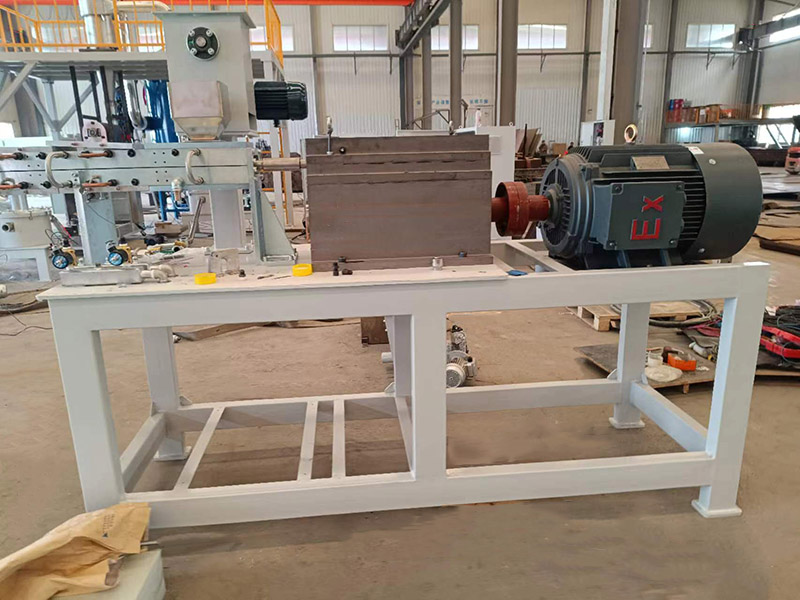The working principle of extruder and operation precautions
The working principle of the extruder is to mix the raw material powder with an appropriate amount of water or other liquids, and to make the material reach a homogeneous state through constant mixing. Subsequently, this stirred material is extruded from a porous die or metal mesh under high pressure. Typically, the raw material is loaded into a cylindrical container and extruded using the rotational force of a screw. Modern extruders also incorporate frequency conversion technology, which enables precise control of the pressure during the extrusion process, so that the appropriate linear speed can be selected to ensure the quality and consistency of the extrudate.
The operating principle of the single screw extruder is particularly complex. The screw is usually divided into three segments according to its effective length, which is determined by the diameter, pitch and depth of the screw, and is generally one third of the total length of the screw. Of these, the last threaded section near the nozzle is known as the conveying section. At this stage, the material does not need to be plasticised, but preheated and compacted under pressure. In the past, it was thought that the material here was a loose body, but later studies have shown that the material here is actually extruded into a solid body like a plug, whose main role is to complete the conveying task of the material.

Immediately followed by the compression section, when the volume of the screw groove is gradually reduced, the temperature is gradually increased to achieve the degree of material plasticisation. From the conveying section to the compression section, the resulting compression ratio (usually 3:1) ensures that the material is gradually compacted and plasticised under the drive of the screw. The plasticised material enters the third section, the metering section. Here the material is kept at the plasticising temperature and is fed to the mould head in precise quantities, like a metering pump. At this point, the temperature must be maintained above the plasticising temperature to ensure the fluidity and stability of the melt.
When using the extruder, the following points need to be observed:
The extruder should always run forwards, avoiding inversion, to prevent the material from flowing backwards through the screw, causing blockages or damage to the equipment.
Avoid running on empty bellies, i.e. starting the extruder without material. This will result in increased friction between the screw and barrel and sticking rods (shaft holding), which may damage the equipment in severe cases.
It is strictly prohibited to enter iron filings and other debris in the extruder's inlet and exhaust holes. These debris will damage the screw and barrel, and even cause safety accidents.
Use electricity safely and make sure the extruder has a good grounding wire. This prevents the equipment from leaking electricity and protects the safety of the operator.
When the machine is running, it is strictly prohibited to touch the rotating parts such as feed port, discharge port, belt, gears, etc. with hands. These parts move extremely fast and may cause serious injury if touched.

Before using the machine, make sure you fill it with the proper amount of lubricant. This will reduce friction between the screw and barrel and extend the life of the equipment.
The function of the extruder is to convert solid plastic into a homogeneous melt by means of heating, pressurisation and shearing action and to feed the melt to the next process. The process of producing the melt involves the mixing of additives such as masterbatch, the mixing of resin and regrinding. In order to ensure that the finished product is uniform in consistency and temperature, the extruder needs to provide sufficient pressure to extrude the viscous polymer. By accurately controlling the parameters of the extrusion process, it is possible to produce plastic products that meet the requirements.


